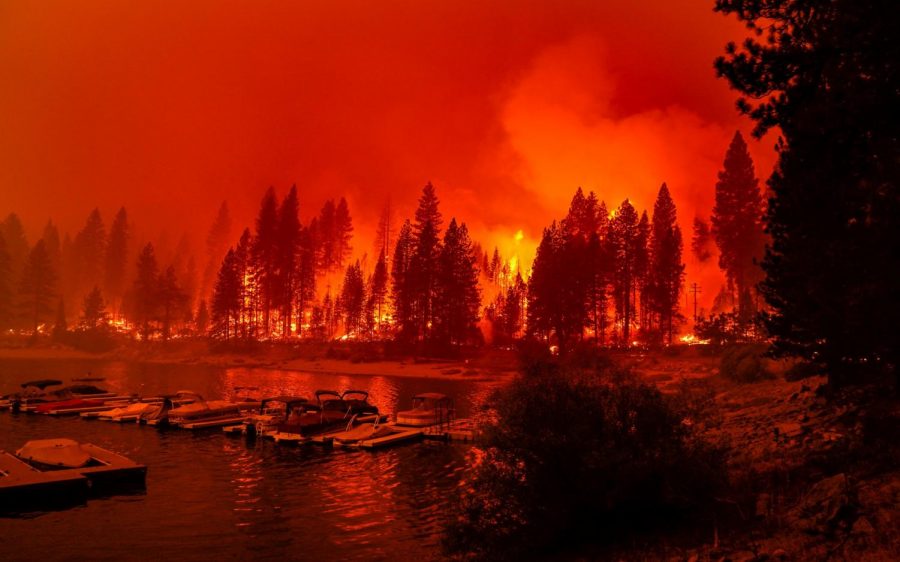Hills Burn in California
October 30, 2020
The smoke from the California wildfires reached New Jersey in mid-September, turning the sun into a hazy red orb accompanied by days of gloomy gray skies and plummeting temperatures. The wildfire smoke managed to travel 3,000 miles across the continent, have burned 4.1 million acres, and have killed 31 people since the beginning of the year. Hundreds of millions of dollars of damage have been done, and Californian communities have gone on for months without substantial federal aid, and it appears they will continue fending for themselves.
California’s governor, Gavin Newsom, asked President Donald Trump for assistance in combating the wildfires. Last year, Trump refused to aid California’s fight against fires after Newsom criticized Trump’s environmental policies in an interview. Trump blames the recurring wildfires on California’s “terrible forest management.” Following Trump’s refusal to help the people of California, the Governor contacted Republican House Minority Leader, Kevin McCarthy, and Senator Andreas Borgeas to appeal to the president. By Friday morning, Trump approved a disaster declaration that allows the state to receive federal aid. Newsom has expressed his gratitude for the president’s quick response.
The communities that receive this federal aid were hit especially hard due to the pandemic this year, as well as previous wildfire damage and accompanying storms. The intensity of all these natural disasters combined essentially boils down to climate change.
Climate change has many disastrous effects, the majority of them caused and prolonged by humans, and the most prominent being global warming. After the Industrial Revolution in the 1800s, the average global temperature has risen by 1.8°C. In California, the temperature has risen about 3°C. This creates a vapor pressure deficit, and the hot air sucks the moisture out of the atmosphere. Eventually, the plants become tinder — the perfect fuel for a raging fire. And because snow melted particularly early this spring in California, the early warmth contributed to the intensity of the ongoing drought on the West Coast. Everything severely dried out, and nothing was being done by the government to manage the dry, dead trees.
Human activities have also caused California’s wildfires to be as destructive as they are. Generations of neglecting, abusing, and destroying the environment has led to this current state. Forest management, as President Trump has mentioned, is critical in the fight against wildfires, but it is certainly not the only factor. An incredibly long domino effect has put California in the situation, the triggering factor indisputably being climate change.
Not only is forest management important to combating wildfires, but understanding that climate change has led to the situation to worsen is crucial. These wildfires could have been prevented through implemented government policies that lessen the human impact on climate change.
To ensure that these wildfires are being contained and proper steps are taken to avert them before they become raging infernos, it is important that the necessary precautions and safety are taken, and to protect the land we live on.
